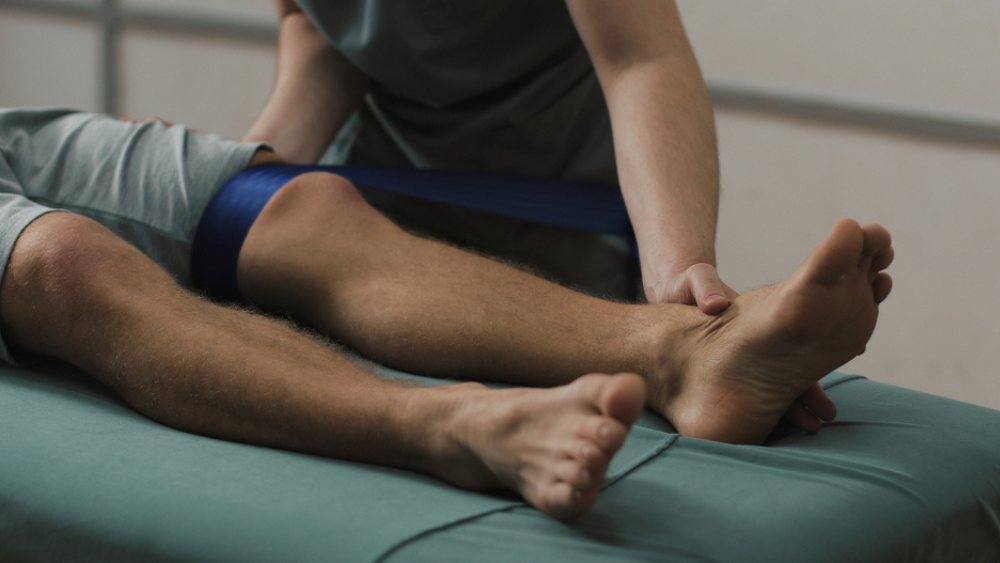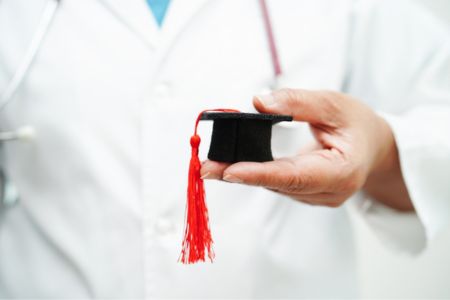
Sports medicine is a rapidly evolving field that bridges the gap between science and physical activity, focusing on helping individuals improve performance, recover from injuries, and prevent future health issues. This guide will delve into the specifics of how to become a sports medicine physician in 6 key steps.
What Does a Sports Medicine Physician Do?
Sports medicine physicians are experts who diagnose, treat, and prevent sports and exercise-related injuries. They work with patients of all ages and skill levels, from young children in youth sports leagues to professional athletes and active older adults. Their key responsibilities include:
- Conducting physical examinations
- Prescribing medications and treatments
- Recommending physical therapy
- Providing nutrition and training advice
- Implementing injury prevention programs
Why Choose a Career in Sports Medicine?
Choosing a career in sports medicine offers the unique opportunity to combine a passion for sports with the science of medicine. It is a highly satisfying profession that comes with the joy of seeing patients recover and excel in their sports or activities. Additionally, the field is known for its innovative approach to treatment and rehabilitation, making it a perfect fit for those who enjoy staying at the forefront of medical technologies and methods.
6 Step Process to Becoming a Sports Medicine Physician
Embarking on a career as a sports medicine physician involves a structured and detailed educational pathway. Here, we break down how to become a sports medicine physician with specific facts, advice, and examples to guide you through each phase of your educational journey.
Step 1: Obtain a Bachelor’s Degree

Obtaining a bachelor’s degree is the first crucial step in your journey to becoming a sports medicine physician. This stage sets the groundwork for all future medical training and education.
Choice of Major
While you can choose any major, selecting a degree that complements medical studies can be particularly advantageous. Here are a few options:
- Biological Sciences: Courses like cellular biology, microbiology, and genetics provide essential knowledge that will be directly applicable in medical school.
- Exercise Science or Kinesiology: This major directly connects to sports medicine, with classes on human anatomy, physiology, sports psychology, and biomechanics.
- Health Sciences: Focused on broader aspects of health care, including public health, healthcare management, and epidemiology, which benefit a holistic medical approach.
- Chemistry or Biochemistry: Strong preparation in chemistry helps with understanding pharmacology and biochemistry in medical school.
Prerequisite Courses
Regardless of your major, medical schools require certain prerequisite courses. Common requirements include:
- Science Courses: General chemistry, organic chemistry, biology, physics, and sometimes biochemistry.
- Mathematics: Statistics and/or calculus.
- Humanities: Some schools recommend or require psychology, sociology, or other humanities coursework to ensure well-rounded candidates.
Academic Excellence
Aim for a high GPA, particularly in prerequisite and science courses. Medical school admissions are highly competitive, and academic performance is a significant factor.
Extracurricular Activities
Engage in activities that will strengthen your application:
- Clinical Experience: Shadowing doctors, particularly those in sports medicine, and volunteering in hospitals or clinics are crucial. These experiences provide insight into the medical field and confirm your interest in medicine.
- Research: Participate in undergraduate research, preferably in a medical or sports-related field. Medical schools highly regard this experience, which can lead to a deeper understanding of medical research and critical thinking skills.
- Leadership and Service: Involvement in clubs, sports teams, or community service demonstrates your leadership skills and commitment to community welfare, traits valued in a physician.
Preparation for the MCAT
Begin preparing for the Medical College Admission Test (MCAT) early. High scores on the MCAT are pivotal for securing admission to a reputable medical school. Consider enrolling in preparation courses, studying with peers, and taking practice exams to assess and improve your readiness.
Letters of Recommendation
Cultivate relationships with professors and medical professionals who can provide strong, personalized letters of recommendation. These are integral to your medical school application and should reflect both your academic abilities and personal qualities.
Advice
You should regularly meet with a pre-med advisor who can provide guidance throughout your undergraduate education, ensuring you meet all requirements and deadlines for a successful application to medical school.
This step underscores the importance of academic preparation and highlights the need for a well-rounded, experientially diverse pre-medical profile. It sets the stage for a successful transition into medical school and, eventually, a career in sports medicine.
Step 2: Attend Medical School
Gaining admission to and completing medical school is fundamental to your training as a future sports medicine physician. This phase is rigorous and challenging but essential for acquiring the medical knowledge and clinical skills required for your career.
Application Process
After obtaining your bachelor’s degree and achieving a competitive MCAT score, you will apply to medical schools. Applications are typically submitted through the American Medical College Application Service (AMCAS) for MD programs or the American Association of Colleges of Osteopathic Medicine Application Service (AACOMAS) for DO programs.
- Personal Statement: Your application must include a personal statement, a critical component that should articulate your passion for medicine and, ideally, your specific interest in sports medicine.
- Interviews: If selected, you will attend interviews that may include traditional one-on-one, multiple mini-interviews (MMI), or group interviews. These assess your communication skills, ethical reasoning, and suitability for a medical career.
Curriculum
Medical school usually spans four years and is divided into pre-clinical and clinical phases.
- Years 1 and 2 (Pre-Clinical):These years focus on foundational medical knowledge through courses in anatomy, physiology, biochemistry, pharmacology, pathology, and medical ethics. They often include lab work and simulated patient interactions.
- Years 3 and 4 (Clinical): Involve rotations in various medical specialties, providing hands-on patient care under supervision. Rotations typically include internal medicine, surgery, pediatrics, psychiatry, and obstetrics/gynecology, among others; your opportunity to gain experience in orthopedics and rehabilitation is crucial for a future in sports medicine.
USMLE or COMLEX
During medical school, you will need to pass the United States Medical Licensing Examination (USMLE) steps 1 and 2 for MDs or the Comprehensive Osteopathic Medical Licensing Examination (COMLEX) levels 1 and 2 for DOs. These exams test your knowledge of the sciences that underpin medicine, as well as your ability to apply that knowledge in clinical scenarios.
- Step/Level 1: Typically taken after the second year, this exam covers basic sciences and is critical for advancing to clinical years.
- Step/Level 2: This exam, taken in the fourth year, assesses clinical knowledge and skills, particularly your ability to diagnose and treat patients.
Choosing a Specialty
Consider which aspects of medicine you are most drawn to during your clinical years. If sports medicine is your goal, consider electives in orthopedics, physical medicine, and rehabilitation to gain more exposure and experience in these areas.
Advice
Maintain a strong academic record throughout medical school, but also seek out additional opportunities to stand out:
- Research and Publications: Engage in research projects related to sports medicine. Publications in respected journals can significantly enhance your residency applications.
- Networking: Attend medical conferences and workshops focused on sports medicine to meet professionals in the field and learn about the latest research and techniques.
- Mentorship: Establish relationships with faculty in sports medicine or related fields. A mentor can provide invaluable guidance, career advice, and potentially influential recommendations for residency.
Medical school is both demanding and rewarding, setting the stage for your specialized training in sports medicine. The skills and knowledge gained here are the building blocks for your medical career, preparing you to excel in sports medicine’s complex and evolving field.
Step 3: Complete a Residency Program

After graduating from medical school, the next crucial step is to enter a residency program. This phase of your training provides extensive practical experience in a specialized area of medicine, laying the groundwork for your future career in sports medicine.
Selecting a Residency Program
The choice of residency is critical, as it will shape your skills and expertise. For those aspiring to specialize in sports medicine, common residency choices include:
- Family Medicine: Offers broad training that includes adult and pediatric medicine, orthopedics, and emergency care, which are pertinent to sports medicine.
- Physical Medicine and Rehabilitation (PM&R): Focuses on restoring functional ability and quality of life to those with physical impairments or disabilities.
- Orthopedic Surgery: Provides extensive training in the musculoskeletal system, surgery, and rehabilitation.
- Pediatrics: Useful for those interested in working with child and adolescent athletes.
- Emergency Medicine: Develop valuable critical care skills in treating acute sports injuries.
Application Process
Residency applications are submitted through the Electronic Residency Application Service (ERAS), and candidates are matched to programs via the National Resident Matching Program (NRMP). Your application should highlight:
- Clinical Rotations: Especially those related to sports medicine and orthopedics.
- Research Experience: Any research work or publications in sports medicine or related fields.
- Letters of Recommendation: Strong endorsements from mentors in medicine, particularly from those in sports medicine or your chosen residency field.
Duration and Structure
Residency programs typically last three to five years, depending on the specialty:
- Year 1 (Internship): Generally involves rotations across various medical fields to build a broad medical foundation.
- Subsequent Years: Focus increasingly on the chosen specialty with opportunities for electives in subspecialties like sports medicine.
Training Focus
During your residency, you will:
- Treat Patients: You will manage patient care under the supervision of experienced physicians, learning to diagnose and treat a wide range of conditions.
- Attend Workshops and Seminars: These are often part of the curriculum, designed to teach specialized skills such as ultrasound techniques, sports injury management, and surgical procedures relevant to sports medicine.
- Participate in Research: Residents are encouraged to engage in research projects, which can lead to presentations at conferences and publications in medical journals.
Licensing
While in residency, you’ll complete the final parts of your licensing exams (USMLE Step 3 for MDs or COMLEX Level 3 for DOs), which are required to practice medicine independently.
Advice
To make the most of your residency:
- Seek Out Mentorship: Find mentors who are leaders in sports medicine to guide you and provide career advice.
- Gain Diverse Experiences: Take advantage of rotations and electives in areas that complement sports medicine, such as nutrition, sports psychology, and advanced imaging techniques.
- Build Professional Networks: Attend national and international conferences on sports medicine to connect with other medical professionals, learn about the latest advancements in the field, and increase your visibility in the sports medicine community.
Completing a residency program is a transformative experience, where you transition from student to practicing physician. This period is vital for gaining the depth of knowledge and hands-on experience needed to excel in sports medicine and significantly impact the lives of athletes and active individuals.
Step 4: Fellowship in Sports Medicine
After completing a residency program, pursuing a fellowship in sports medicine allows for more focused and advanced training in this specialized field. This step is essential for physicians aiming to gain expert-level knowledge and skills related to sports and exercise medicine.
Choosing a Fellowship Program
When selecting a fellowship, consider programs that align closely with your career goals and interests. Here are some factors to consider:
- Program Reputation and Curriculum: Look for programs known for excellence in sports medicine, with a comprehensive curriculum that covers a wide range of sports injuries, prevention strategies, and rehabilitation techniques.
- Faculty and Mentorship:Choose a program that offers robust mentorship from established professionals in the field. These mentors can provide invaluable guidance, career advice, and networking opportunities.
- Research Opportunities: Programs with strong research components can enhance your understanding of the field and contribute to your professional credentials.
Application Process
Similar to residency, fellowship applications are submitted through the Electronic Residency Application Service (ERAS) and matched via the National Resident Matching Program (NRMP). Your application should demonstrate:
- Specialized Clinical Experience: Highlight any specific rotations, skills, and responsibilities you managed during your residency relevant to sports medicine.
- Leadership and Initiative: Include any leadership roles or initiatives you undertook related to sports medicine, such as organizing a conference or starting a clinic.
- Publications and Presentations: List any research papers, presentations, or workshops you have been involved in, particularly those related to sports medicine.
Duration and Focus
Fellowships in sports medicine typically last one to two years and are intense, immersive programs that include:
- Clinical Training: Hands-on patient care in various settings, including clinics, hospitals, and sports arenas, managing various sports-related injuries and conditions.
- Surgical and Non-Surgical Skills: Depending on the program’s focus, training may include learning advanced surgical techniques or mastering non-surgical interventions such as ultrasound-guided injections and concussion management.
- On-Field Experience: Many programs offer experiences with local sports teams, from high school to professional levels, providing real-world sports medicine practice.
Certification Preparation
The fellowship is designed to prepare you for the sports medicine subspecialty certification exam offered by the American Board of Family Medicine (ABFM), the American Board of Pediatrics (ABP), or other relevant specialty boards.
Advice
To optimize your fellowship experience:
- Engage Fully in Clinical Opportunities: Take advantage of the diverse clinical experiences to hone your diagnostic and treatment skills.
- Participate in Research: Engage in research projects that can lead to new insights and innovations in sports medicine, enhancing your resume and contributing to the field.
- Network Extensively: Attend sports medicine conferences, seminars, and workshops to build relationships with other sports medicine professionals and stay updated on the latest trends and technologies in the field.
Completing a fellowship in sports medicine is a pivotal step that significantly enhances your expertise and credentials. It prepares you for a leadership role in managing sports-related injuries and optimizing athletes’ health. This advanced training opens doors to opportunities in private practices, academic settings, sports teams, and beyond, allowing you to profoundly impact the athletic and active populations you serve.
Step 5: Obtain Certification
Obtaining board certification is an essential step after completing your fellowship in sports medicine. This certification validates your expertise and specialized skills and enhances your credibility with patients, colleagues, and employers.
Understanding Certification Bodies
Depending on your primary specialty from residency, you can seek certification through various boards. Common options include:
- American Board of Family Medicine (ABFM): Offers a Certificate of Added Qualifications (CAQ) in Sports Medicine for those who completed a family medicine residency.
- American Board of Internal Medicine (ABIM): For those from an internal medicine background.
- American Board of Emergency Medicine (ABEM): For those with training in emergency medicine.
- American Board of Pediatrics (ABP): Offers sports medicine certification for pediatricians.
- American Board of Physical Medicine and Rehabilitation (ABPMR): For physiatrists who wish to specialize further in sports medicine.
Certification Process
The process typically includes:
- Eligibility: Confirm that you have completed an accredited fellowship program in sports medicine and met all necessary training requirements.
- Examination: Passing a comprehensive examination that tests your knowledge and skills in sports medicine. The exam covers a wide range of topics, including assessing and managing sports injuries, rehabilitation, and promoting physical activity.
- Application: Applying for the certification exam, which includes documenting your education and fellowship training, along with any continuing medical education credits specific to sports medicine.
Maintaining Certification
To maintain your certification, you will need to participate in ongoing education and periodically pass recertification exams. The certifying board sets these requirements and typically include:
- Continuing Medical Education (CME): Regular participation in educational activities that keep you updated with the latest advancements in sports medicine.
- Recertification Examination: Most boards require recertification every 7 to 10 years, involving an examination or completion of practice improvement modules.
Advice
To successfully navigate the certification process:
- Prepare Thoroughly for the Exam: Take advantage of study guides, past exam papers, and review courses offered by various professional societies and institutions.
- Stay Informed: Regularly check the website of the relevant certifying board to stay informed of any changes in certification or recertification requirements.
- Engage with Professional Organizations: Organizations such as the American College of Sports Medicine (ACSM) and the American Medical Society for Sports Medicine (AMSSM) offer resources, workshops, and conferences that can provide valuable learning opportunities and help meet CME requirements.
Obtaining and maintaining certification in sports medicine is crucial for your career. It enhances your professional standing, ensures you continue to deliver the highest-quality care to athletes and active individuals, and signifies your commitment to excellence and lifelong learning in the evolving field of sports medicine.
Step 6: Licensure

After completing your residency (and possibly a fellowship), obtaining a medical license in the state where you plan to practice is crucial. This license allows you to practice medicine legally and is required before you can treat patients independently.
State Medical Board
Each state has its own medical board with specific licensing requirements, but they generally include passing a comprehensive medical examination, completing a certain number of years in residency, and passing a background check.
Examination Requirements
For MDs, the licensing exam is the United States Medical Licensing Examination (USMLE), which includes three steps:
- Step 1 tests your understanding of the basic sciences important to the practice of medicine.
- Step 2 is divided into Clinical Knowledge (CK) and Clinical Skills (CS), focusing on your ability to apply medical knowledge and skills in a clinical environment.
- Step 3 assesses whether you can apply medical knowledge and understanding of biomedical and clinical science essential for the unsupervised practice of medicine.
For DOs, the equivalent is the Comprehensive Osteopathic Medical Licensing Examination (COMLEX-USA), which also consists of three levels testing similar competencies.
Application Process
The process typically involves:
- Submitting Proof of Education: This includes transcripts from medical school and any postgraduate training.
- Providing References: Some states require references from doctors or hospitals where you have worked.
- Background Check: A clean criminal record is generally a requirement for licensure.
- Fees: Payment of an application fee is usually required.
Timelines
Licensure processing times can vary from one state to another. It’s crucial to apply well in advance of when you plan to start practicing, as delays can occur.
Maintaining Licensure
To maintain your medical license, you must meet continuing medical education (CME) requirements and renew it periodically (usually every one to three years, depending on the state). CME activities are designed to keep you informed of medical advancements and continually improve your skills.
Advice
- Check Specific State Requirements: Since requirements can vary significantly by state, it’s essential to check with the state’s medical board in which you plan to practice for specific requirements.
- Plan Ahead for Renewals: Keep track of when your license needs to be renewed and what you need to do to maintain it, such as completing CME credits.
- Stay Organized: Keep thorough records of all your certifications, CME credits, and important documents related to your medical education and training.
Obtaining your medical license is the final hurdle to becoming a fully independent sports medicine physician. It is a critical step that legalizes your status as a practicing physician and affirms your competence and commitment to maintaining the highest standards of medical care.
How Much Do Sports Medicine Physicians Make?
According to data from the Bureau of Labor Statistics (BLS) and various medical salary surveys, the average annual salary for sports medicine physicians in the United States typically ranges between $150,000 and $300,000, with a median salary of $246,446. However, these figures can fluctuate based on demand, specialization, and their practice setting.
The demand for sports medicine physicians is expected to grow as more people recognize the importance of sports and exercise and the benefits of preventative care. The expanding focus on youth sports safety and the aging population’s need for physical activity support suggest a positive outlook for the field.
Start Your Sports Career Today
Pursuing a career as a sports medicine physician offers a blend of rewarding challenges and substantial rewards. To enhance your journey to become a sports medicine physician, consider utilizing specialized resources that connect you with the broader sports industry. Jobs In Sports is an excellent platform for this purpose.
Take Your Next Step
- Sign Up for Free: Create a job seeker profile and receive invitations from employers to apply for jobs.
- Upgrade to a Paid Membership: Unlock detailed job descriptions and access to a sports job database.
- Explore Sports Job Listings: Regularly review sports job listings to find your ideal role.
Start your career in sports medicine with the right resources at your fingertips, ensuring a successful and fulfilling professional life.





